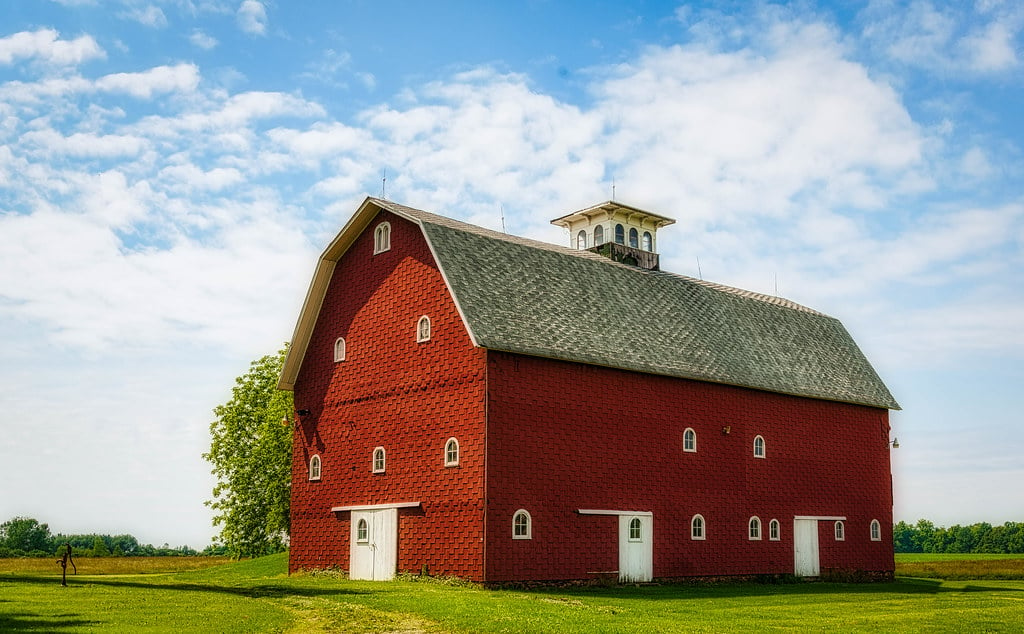When we were kids, we’d always remember a big red barn in stories and books. But did you know how the classic red barn came to be?
Back in the day, farmers would paint their barns with linseed oil and rust to protect it from fungi and moss. The combination of the two ingredients created a red mixture, that gave their barns the iconic bright red hue.
How Did Barns Start Out?
Contrary to what you may think, the design of the traditional barn was not developed in America. It originated in Europe where long houses were composed of stables and sleeping quarters.
Eventually the builders created the arching hallways to make more space for storage. By the mid-1800s the multiple function barn was adapted. Basements were then added to act as a barn bank. (Source: Grit)
What are the Features of a Traditional Barn?
There are several buildings in a farm, but the barn is the most common one. It is used to house a few animals, store feed, and farm equipment. Here are some parts of the barn and their functions:
Tack Room
The tack room is where bridles and saddles are stored. This space is often set up as a breakroom as well, where farmers can relax after a hard day on the farm.
Feed Room
The feed room is where the animal feed is kept. Some farmers keep their feed bales in a stackyard, but smaller farms utilize the space inside the barn for storage.
Drive Bay
The drive bay is the main hallway of the bard where large farm animals and equipment can enter through.
Some barns have additional features like a silo, miniature corral or a milkhouse depending on the type of farm they are on. (Source: Britannica)
Were Barns Always Painted Red?
Barns were not originally painted in red. In fact, farmers rarely painted their barns at all. Farmers back in the day didn’t want to spend extra money on paint, they kept the wood natural.
In the late 1700s, farmers started to get creative by looking for ways to protect their barns from the elements. This way it would last longer, and in essence cost less. (Source: Ohio Amish Country)
How Did Farmers Formulate the Sealant?
There was a lot of trial and error in the process. The first recipe was made up of skimmed milk, lime and red iron oxide. This solution was very affordable to make and lasted for years.
They improved the formula by using linseed oil which is derived from flax plants. This prevented bare wood from rotting, and the growth of fungi and moss.
Soon after, farmers started painting their barns with the homemade paint. (Source: Ohio Amish Country)
Is There Any Reason Why Painted Barns are More Efficient in Different Weather Conditions?
Over the years, farmers noticed how painting their barns also affected the temperature inside. The bright red hue kept the barn warmer during winter. The color absorbs the heat from the sun’s rays better than natural wood. (Source: Live Science)
Why Are Barns Still Painted Red Today?
While paint and sealants today are readily available in various colors, most farmers retain the bright red hue out of tradition. (Source: Business Insider)
